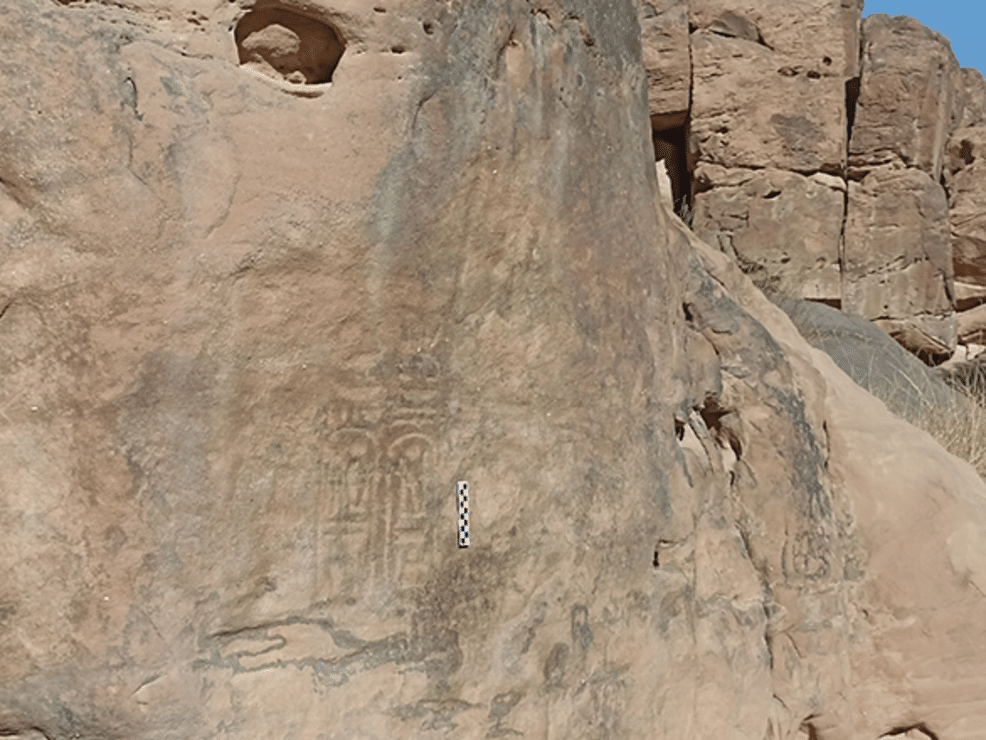

A Pharaonic hieroglyphic inscription bearing the royal cartouche of Pharaoh Ramses III has been discovered in southern Jordan’s Wadi Rum Reserve, marking the first confirmed evidence of Pharaonic Egypt’s presence in the Kingdom.
Jordan’s Minister of Tourism and Antiquities, Lina Annab, announced the finding during a press event, which was attended by world-renowned Egyptologist Dr. Zahi Hawass.
The inscription, located near the Jordanian-Saudi border southeast of the reserve, includes two cartouches containing the birth and throne names of Ramses III, ruler of Egypt’s Twentieth Dynasty.
“This is the first of its kind to be found in Jordan,” Minister Annab said, emphasizing its role as material evidence of long-standing historic ties between ancient Egypt, Jordan, and the Arabian Peninsula.
She described the discovery as a “qualitative addition” to Jordan’s extensive archive of inscriptions and reaffirmed the country’s identity as a cradle for civilizations.
Dr. Hawass emphasized the significance of the find, calling it a crucial step in understanding ancient Egyptian activity in the southern Levant. He noted that the discovery may lead to further excavations and the uncovering of additional artifacts that could shed light on the extent of Ramses III’s campaigns beyond Egypt’s borders.
The site documentation and preservation were led by a team of Jordanian archaeologists, including Professor Ahmed Lash of the Department of Antiquities and Dr. Ali Manaseer from the Hashemite University.
Their efforts were supported by Mohammed Dhamyan Zalabiyya from the Aqaba Special Economic Zone Authority, forming what officials described as a fully integrated national team.
The discovery is also part of a wider joint initiative with the Saudi Heritage Commission, reflecting growing regional cooperation in cultural heritage research.
Acting Director General of the Department of Antiquities, Dr. Aktham Owaidi, commended both the Jordanian and Egyptian teams for their collaboration. He also praised Minister Annab for her ongoing support of the heritage sector, noting that such partnerships not only strengthen scientific and cultural ties but also play a vital role in preserving shared history.
Pharaoh Ramses III, who ruled from 1186 to 1155 BC, is often seen as the last great monarch of Egypt’s New Kingdom.
He is celebrated for defending Egypt against the Sea Peoples and building the vast mortuary temple at Medinet Habu in Thebes. The temple remains one of the most well-preserved structures from ancient Egypt.
Minister Annab stated that the official academic publication of the discovery of Pharaonic inscription of Ramses III will follow after research and analysis are complete. She explained that they are committed to preserving their national heritage and passing it on to future generations.
In recognition of his contributions to archaeology and heritage preservation, Annab honored Dr. Hawass at the ceremony.
The discovery, officials say, offers a rare glimpse into the cultural, military, and commercial links that once connected ancient Egypt to the wider region over 3,000 years ago.
